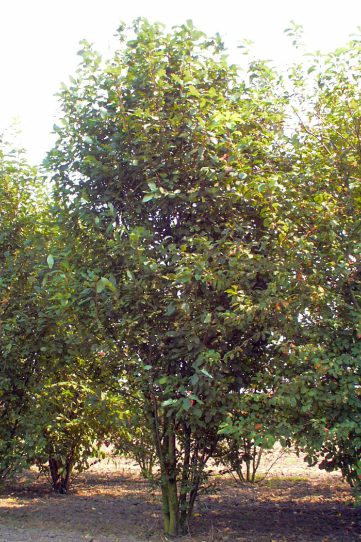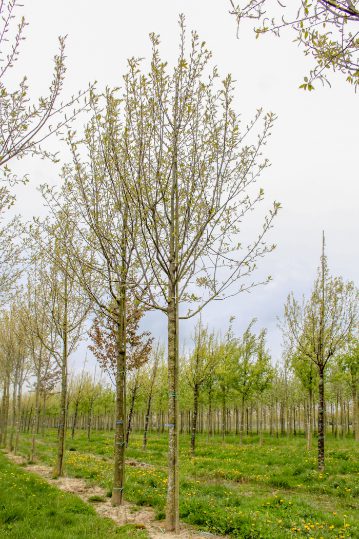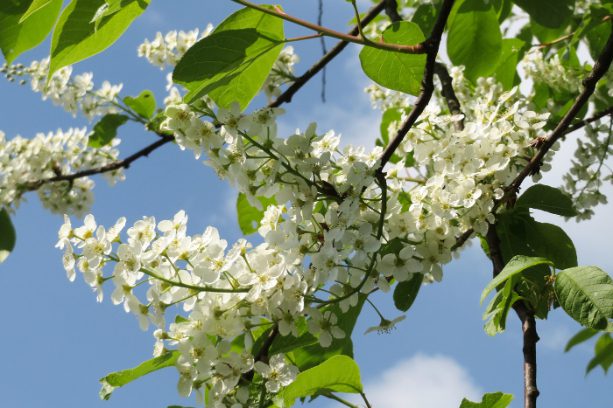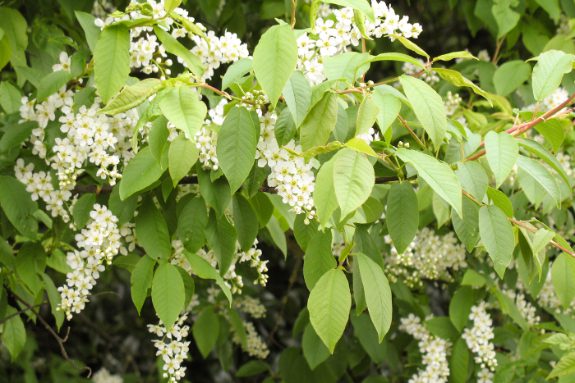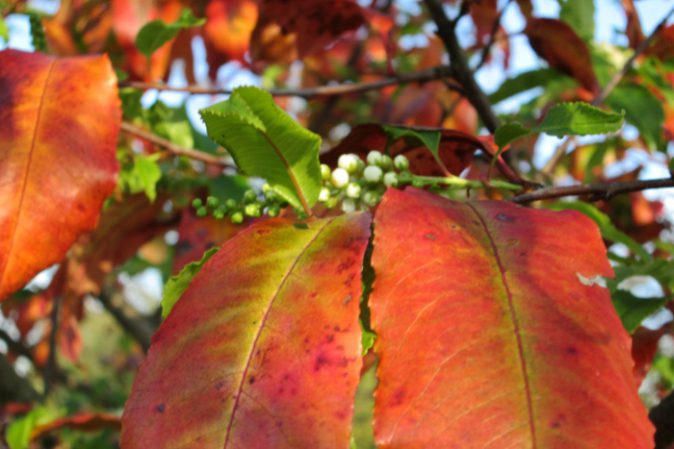Prunus padus | Bird Cherry
Native to northern Europe and north Asia, the Prunus padus is a splendid, medium-sized flowering Cherry with a rounded crown. It has oval, hairless green leaves, with fine sharp serrations along the edge that turn orange, yellow and bronze in autumn. April to May the Prunus padus has clusters of white blossom that hang on racemes. The flowers have a distinctive almond smell and are a great source of nectar and pollen for bees and other pollinators. After pollination the flowers develop into small, black fruits that have a bitter taste but are enjoyed by birds and other mammals. The bark is grey-brown and smooth, and has an unpleasant acrid smell. The Prunus padus is a very hardy tree that will grow in all soil types, and will tolerate wet ground, exposure and wind. There are a few cultivars of the Prunus padus, in particular the Prunus padus 'Albertii'. This tree has been cultivated in an upright form ideal for street planting.
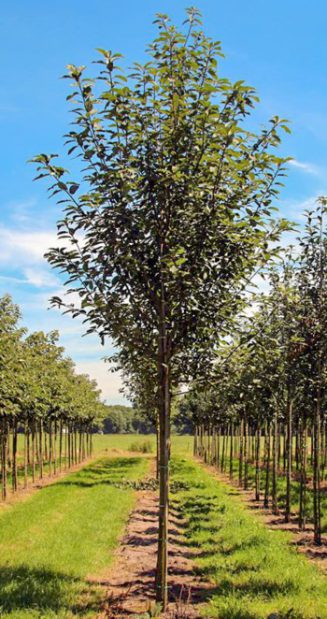
Many years ago it was believed that the strong-smelling bark had magical properties that could ward off the plague, so it was hung on the front door. The black fruits can be used for making liqueur or for dyeing wool. Bird cherry wood is lighter and more finely textured than wild cherry and has been used for making small objects, such as wooden boxes and tool handles. Before industrial pesticides were available, the bark of bird cherry was used as a pesticide; the chemicals it contains protecting crops from rodent and insect attacks.

